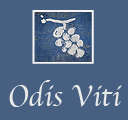The Board of the permanent Committee of Biological Agriculture of the European Commission put forward a favourable opinion to the new regulation for the production of organic wine. These measures were very much expected and were subjected to bitter discussions ; the new regulation should be published shortly in the Bulletin of the European Commission.
This should allow the effective production of organic wine elaborated as from the 2012 harvest. The producers will have to respect the specifications (with a certification number delivered by a certified Body) and thus affix on the label the European logo of biological agriculture as well as the indication of “organic wine”.
Until now the only authorised indication is “wine elaborated from biological agriculture” ; this indication will consequently be forbidden as from the 31st July 2012, at: such date the new regulation should come into force.
Regulated information
The discussions which have been lasting now for several years dealt with the whole of the rules of the elaboration of organic wine from grape to wine ; as for the “raw material”, which is the grape, the matter had been settled for long through the specifications of biological agriculture ; on the contrary the conditions of elaboration and storage of wine were very difficult to settle;
The whole of the measures will be included in the next regulation which should be published shortly; in substance we can indicate that the oenological additives which are authorised will be put down in writing in a positive list (what will not be indicated in this list will be forbidden) ; and concerning the physical and thermal process there should be on the contrary a negative list (what will be mentioned in such list will be forbidden) ; some techniques will be authorised with reservation (for instance the thermal process).
The most symbolic change will concern the rates of sulphites which will be reduced compared with the base wine and the thresholds of which will depend on the rate of residual sugar.
Sugar < 2 g/l SO2 max en mg/l
| Vin rouge | Vin blanc et rosé | |
| Organic Wine | 100 | 150 |
| Vin conventionnel | 150 | 200 |
Sugar > 2 g/l SO2 max en mg /l
| Red Wine | White Wine & Rosé | |
| Organic Wine | 120 | 170 |
| Conventional Wine | 150 | 200 |
Economical data on the biological career
Organic wine is not part of biological products bought by the consumer.
The first rank is occupied by fruit and vegetables.
Wine elaborated from biological agriculture is presently increasing in France : 50000 ha and 3900 producers ; France ranks third behind Spain and Italy ; the most important customers are Germany and the Benelux countries.
The vine conversions into organic wine are highly giving up : the gain :amounts to 8% in one year and viticulture represents presently a little less than 10% of the biological market in France (Turnover 3,4 thousand million Euro).
The potentiality of development of these products remains very important in viticulture ; the change of denomination of “wine elaborated from biological agriculture” into “organic wine” was very much expected and will contribute to reinforce the picture and the attractiveness of this career in viticulture.
 English
English Français
Français 

